A Scent of Flowers
The haunted house horror genre has had me in its thrall for many years. What is it about a haunted house tale that’s so compelling? Along with the thrill of a scary story, maybe it’s that they often carry a historical connection, or it’s the aesthetic appeal of old buildings, or it’s what a strong sense of place adds to any story. Sometimes horror revolves around a terrifying monster, but the things that frighten us are often grounded in a sense of place, whether it’s the woods, an abandoned asylum, a summer camp, a town, a portal in a basement, or a haunted house.
To try to unpack this appeal, I’m going to take a look at two of my favorite haunted house movies and two of my favorite haunted house books, and see what elements they share.
“Then be afraid, be afraid for heaven’s sake.”
The Uninvited (1944), directed by Lewis Allen with a script by Dodie Smith (yes, the same Dodie Smith who wrote 101 Dalmations) and Frank Partos, is based on the novel Uneasy Freehold by Dorothy Macardle. The film begins with an opening that is almost lyrical in feel, establishing the sea as a primal background presence that will pervade the film. Siblings Roderick (Ray Milland) and Pamela (Ruth Hussey) decide to rent Windward House, a neglected home on the English coast. A strong sense of nature is a common earmark of the works I’m highlighting, and is prominent here, with the cliffs, the sea, and the natural elements playing a key role.
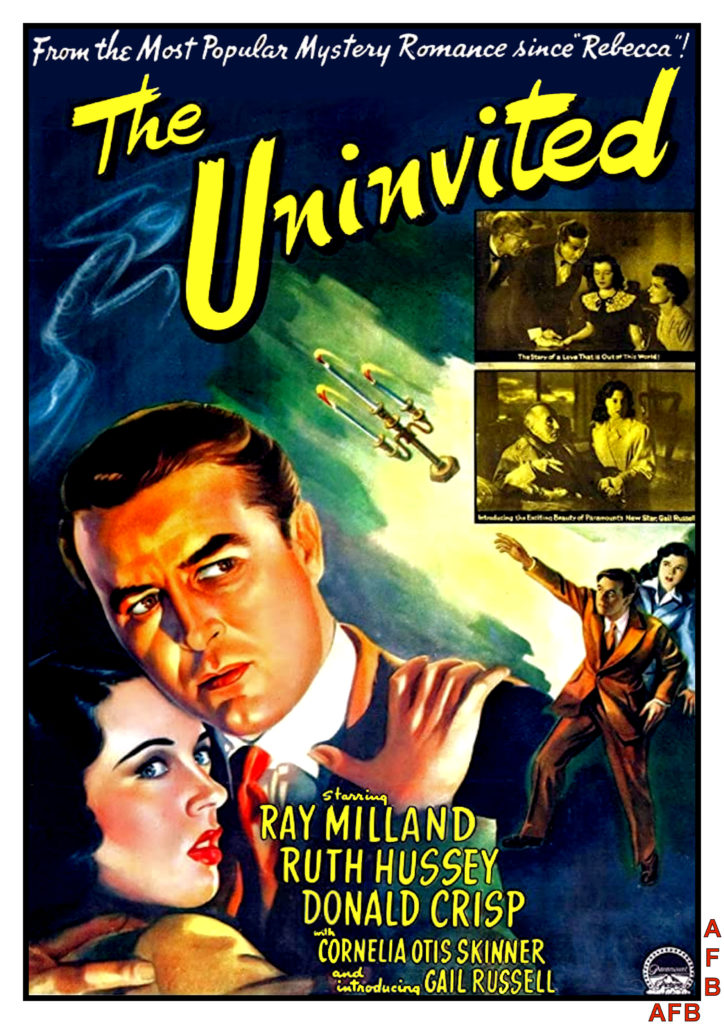
The Uninvited was a groundbreaking movie for the horror genre, creating an atmosphere that still can still raise hairs on the back of modern audience’s necks. It was made long before the advent of CGI or many later advances in special effects. The movie makes heavy use of lighting for atmosphere, and cues such as wilted flowers, cold spots, candles guttering in inexplicable drafts, and the soft sound of a woman weeping in a dark house in the middle of the night. The scent of mimosa is a recurring element.
There’s hints of bildungsroman in the journey of Stella (Gail Russell) as she returns to the house where she was born, and faces the trauma of the events that transpired there. She begins to assert her independence and adulthood to her loving but over-protective grandfather, and finally processes and then gains closure on the memory of her mother and the events that led to her death when Stella was just a toddler.
The film explores darker themes such as mental illness and xenophobia, and the way culture disbelieves women, even those with wealth and privilege. Both Pam and Stella have to stand their ground to get male characters to listen to them. The plot is somewhat evocative of Rebecca (1940), which, while not a haunted house story specifically, is nonetheless about a house and people haunted by the memory of a person, and a battle of wills between a young woman and the past.
And how many horror films open with a song that winds up as one of the top charting jazz hits of all time?
Jumping ahead almost half a century, we have Poltergeist (1982), story by Steven Spielberg, screenplay by Michael Grais and Mark Victor, directed by Tobe Hooper. Poltergeist is one of those films I think of as a “Spielberg movie,” although he’s not the director. It involves many of the common themes of his films: strangeness intruding into suburbia, the strength of love, imperiled children being brave, and a jolting big effects ride. Driven by emotion at its core, the movie also taps into themes of corporate greed, 80s suburban culture, isolation and loneliness, genuine and corrupted faith, and the nature of fear. A poltergeist, by definition, is something that latches onto a person, not a place, as Beatrice Straight’s Dr. Lesh explains. But this film is nonetheless a haunted house story.
[Read Leah Schnelbach on Poltergeist over at Tor.com]
As in The Uninvited, natural elements play an important role. The opening emphasizes the natural world – almost idyllic, green hills, wildflowers – until the camera reveals the suburban development growing in the valley below. Later in the movie there’s a sequence involving a thunderstorm and a terrifying old tree. The ground itself beneath the Freeling family home is inherently an attractor of the paranormal activity, not just the youngest daughter, Carol Anne (Heather O’Rourke). In one shot, fog turns the Freeling’s prosaic pseudo-Tudor average suburban home into something with the aged and spooky look of traditional gothic horror. Diane Freeling (JoBeth Williams) battles skeletons in water and mud. Steve Freeling (Craig T. Nelson) has to fight a possessed tree to save his son Robbie (Oliver Robins). The effects team also clearly had way too much fun with terrifying skyscapes, not just ghosts and gore. The natural elements themselves advance to menace the Freeling family.
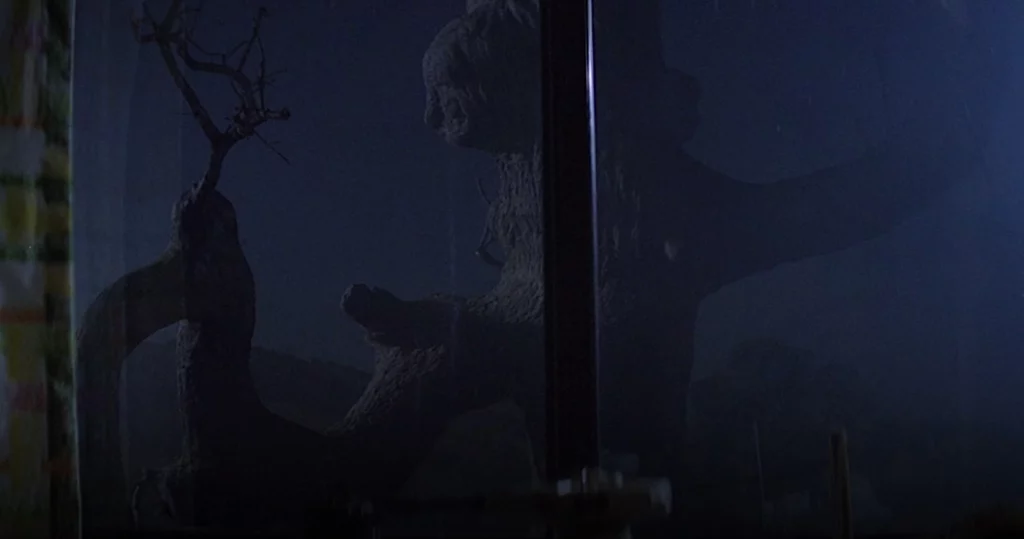
A lullaby theme used in the score creates a soft, innocent contrast to the visual horrors. While The Uninvited worked with lighting and quietly chilling notes, Poltergeist being from a different era went all out on visual horror and special effects. Yet it builds slowly, and uses atmosphere as much as visual shocks, from the ordinariness of household life, to small things seeming out of place, to chairs that slide across the floor, to shadows, to the tension of something awful about to happen. It’s just a clown doll, it’s just a thunderstorm. One one-thousand, two on-thousand, three one-thousand.
Poltergeist (like many Spielberg works) operates on tapping into childhood primal fears. There is something in the closet and under the bed. Things escalate quickly to portals, ghostly monsters, some scenes of gore, attacking skeletons, and events that would definitely lower the development’s property values.
One major appeal of the haunted house story is how the ordinary becomes extraordinary, and how people band together to survive ghostly onslaughts. As in The Uninvited, our main heroes don’t do it alone. Zelda Rubinstein brings a particularly iconic role as the medium Tangina. There is also a note here about coping with a world turned upside down, a family suffering trauma and loss. One scene that stood out to me on rewatch was Diane opening the door to her childrens’ room when it’s quiet, hoping that maybe, magically, everything would be back the way it should be, but a monster screams.
Diane herself also has a sense of wonder and discovery about the odd things the ghosts are causing in her home before things turn much scarier and darker. She plays investigator, with a scientific curiosity and excitement, before they bring in the ghost-hunting team. Diane then takes on the role of warrior, symbolically blessed by Tangina, before she ventures into the ghost realm to confront a monster and save her daughter.
Near the end of the film, in a moment of peace before the final jump scares commence, Diana stands in the sun and comments on the scent of mimosa flowers on the wind – a scent that played a key role in The Uninvited.
While I love haunted house movies, books have often proven to have richer goods for haunted house tales. In my post on Tor’s history of publishing horror, I said a few words about The Family Plot by Cherie Priest. Because I love this book, I decided to highlight it again in more detail. The Family Plot had me from the dedication: “This one is for everybody who’s ever loved an old house.” There have been a few old houses in my life, and I grew up in an historical area covered with them. There’s something about an old house that feels different–a strong sense of place, the history of those who lived there, the way they withstand time.
Set on a mountain in Tennessee, The Family Plot follows the Dutton family and the team of cash-starved Music City Salvage as they work the old Withrow House. Built in 1882, the mansion is slated to be torn down. The last surviving Withrow, Augusta, hires the salvage company, and says “You mustn’t cry for the Withrow house, Mr. Dutton. It’s a miserable, drafty, oppressive old place with nothing but architectural details to recommend it.”
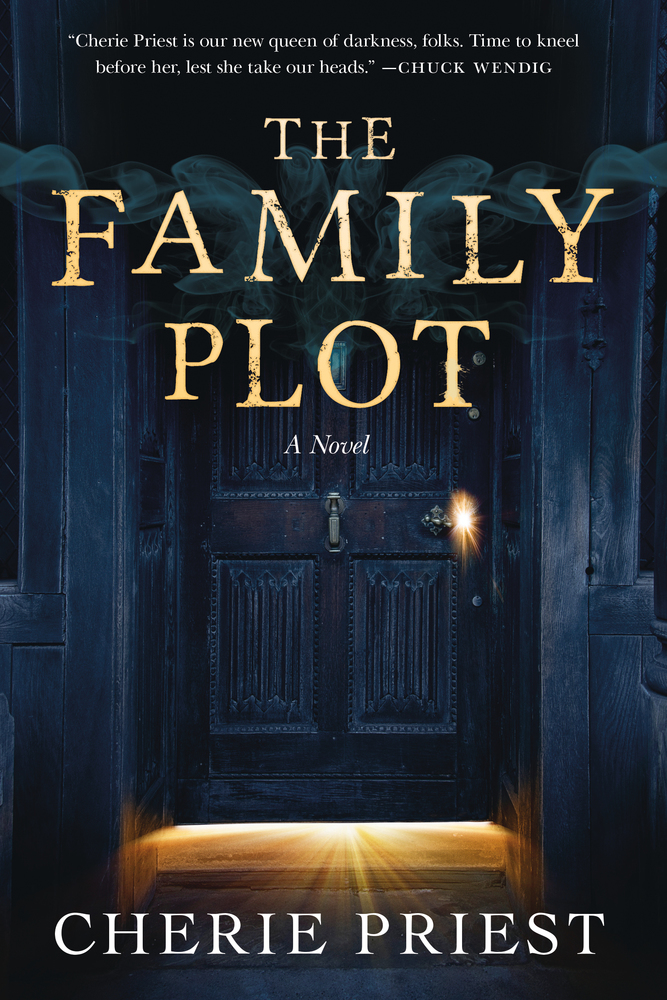
Dahlia Dutton, daughter of Music City Salvage’s owner Chuck Dutton, along with her friend Brad, her cousin Bobby, and Bobby’s son Gabe, get to work stripping the house of valuable fittings, details, and any remaining antiques left behind. There’s an immediate sense of spookiness–something’s not right–and the atmosphere of danger slowly escalates. The team stumbles onto an abandoned cemetery plot that Augusta somehow failed to mention. There’s also something wrong with the water, resulting in a few scenes that might make you scared to take a shower for a little while.
Recently divorced, Dahlia is a relatable, appealing main character, her insecurities combined with her take-charge demeanor, her boldness mixed with her fears. Dahlia’s emotional trauma and self-doubt makes her a compelling target for what is haunting the Withrow House.
Like The Uninvited and Poltergeist, The Family Plot too makes use of its natural setting. The house is faded and overgrown with ivy, as nature starts to reclaim it. Dahlia still sees the house as beautiful, and apologizes to it: “I promise, I will take you apart with love… and I’ll never forget you.” Like Pamela in The Uninvited, Dahlia humanizes a neglected place, and forms a connection with it, and then becomes terrified by it. There is a significant use of storms to create atmosphere and logistical problems for the salvage team, and increase the peril. The mountain itself where the Withrow House sits has its own brooding presence.
The Family Plot is a classic ghost story, but its main theme is a commentary on family, from the Withrow story, to the Dutton clan. Dahlia and her cousin Bobby were close growing up, but became estranged. Dahlia gets along well with her father, Chuck, but is seeking to establish her own sense of independence, while running the family business and working with difficult relatives. The Withrow family history is riddled with dysfunction. Sometimes blood family can be toxic, and sometimes it’s there for you, and will look after you, despite the problems.
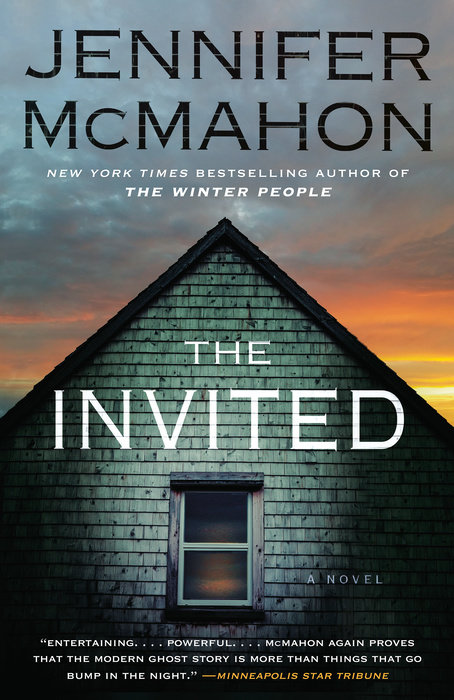
Like The Family Plot, The Invited by Jennifer McMahon takes a look at the imprints the past leaves on the present. After including a haunted house film called The Uninvited, it seems fitting I’d also talk about a haunted house novel called The Invited, where the ghost is wanted and summoned.
Helen and Nate move to Vermont to start over with a different life, living closer to nature, and to build their own home themselves. McMahon’s novel has a powerful connection to nature in the form of the haunted bog on the land Helen and Nate own. The bog itself is a character, menacing and beautiful. Nate is a naturalist, who sketches and makes observations on local wildlife, which will also wind up playing an important role. Helen is a former history teacher and the daughter of a builder, who grew up knowing how to do construction. Helen’s interest in local history drives a lot of the plot, as she becomes intrigued by local legends, and then fascinated by a local ghost.
To give their house a sense of history, Helen seeks out antique materials from old buildings, anything with a story, and a lot of it as it turns out is informed by tragedy. Usually in a haunted house story, a family moves into a house and discovers a preexisting haunting. Nate and Helen accidentally build a haunted house themselves from the ground up. Helen invites the spirit into her half-built home. The couple befriend a teenage girl, Olive, who has her own connection to tragedies of the past, and to the haunted bog, as well as the legend of a treasure supposedly buried there. The story unfolds through the POV of female characters in different time periods, and with multiple mysteries to unlock, and alternates between the past and Olive or Helen’s POV in the present. It covers themes of trauma, loss, and injustice, while centering female characters.

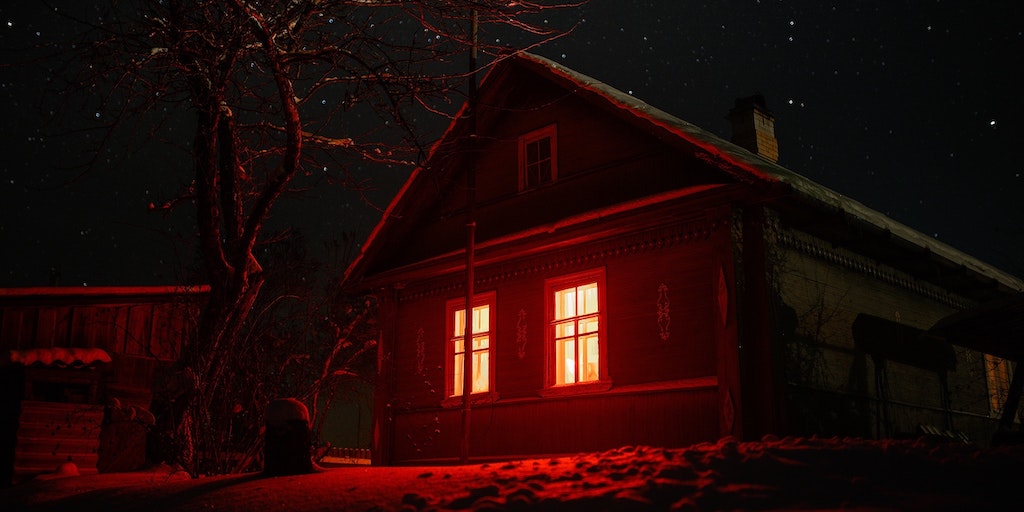


One thought on “A Scent of Flowers: The Perennial Appeal of the Haunted House”